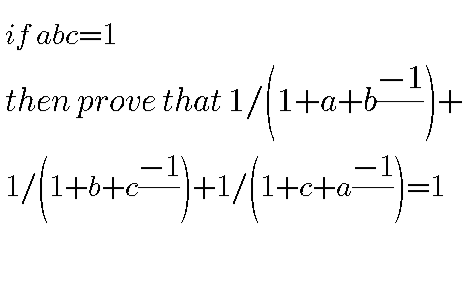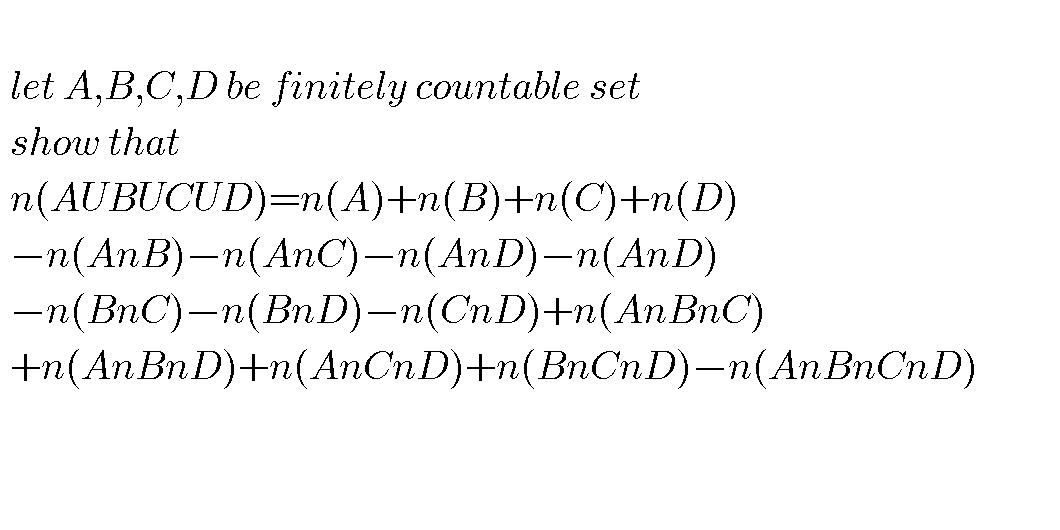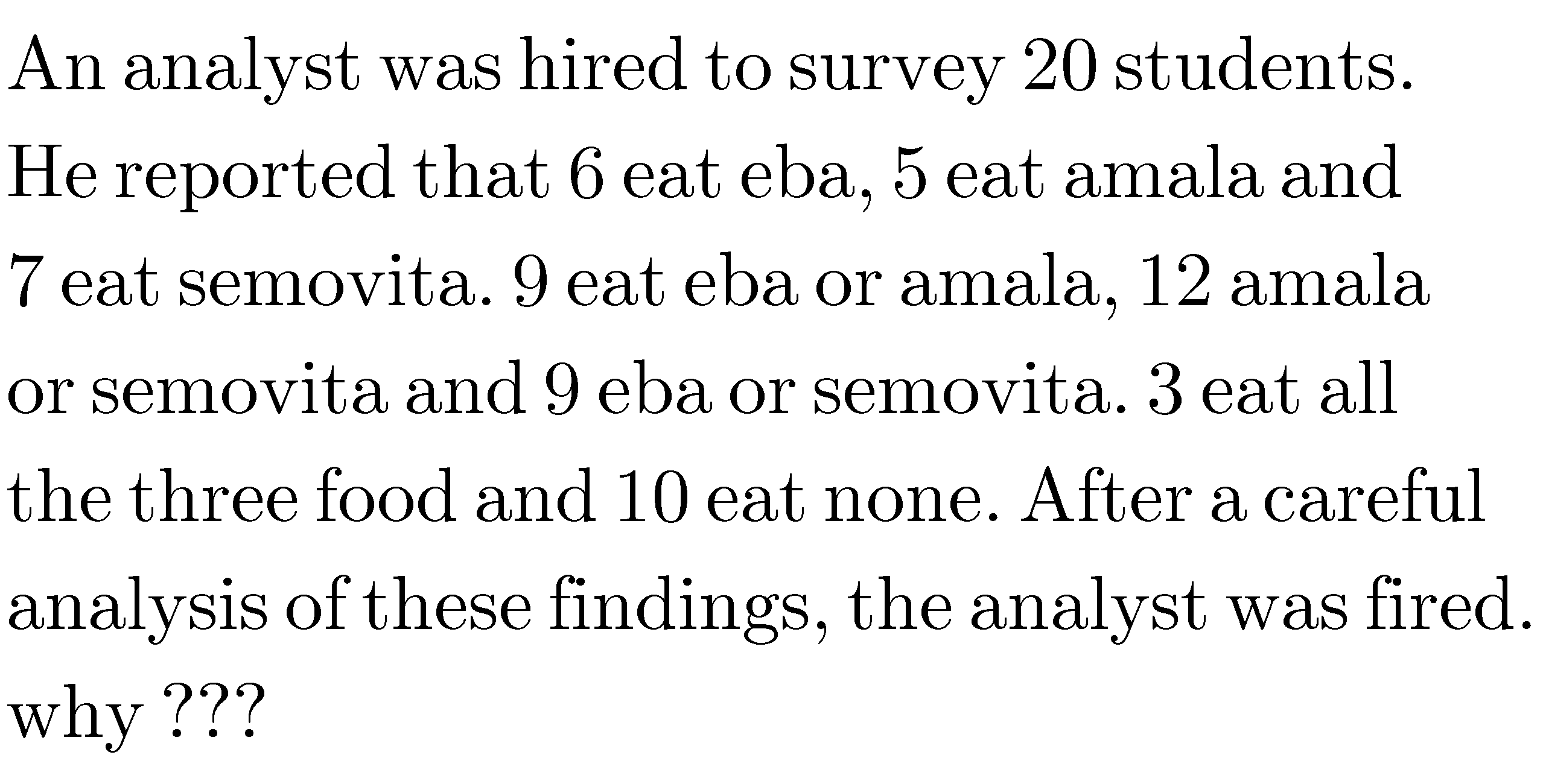
Set TheoryQuestion and Answers: Page 5
Question Number 64250 Answers: 0 Comments: 0

Question Number 56744 Answers: 1 Comments: 0
Question Number 56203 Answers: 0 Comments: 0

Question Number 55633 Answers: 1 Comments: 0
Question Number 47354 Answers: 0 Comments: 4

Question Number 45840 Answers: 0 Comments: 0
Question Number 44826 Answers: 2 Comments: 0
Question Number 42763 Answers: 0 Comments: 1
Question Number 36061 Answers: 1 Comments: 2

Question Number 35703 Answers: 1 Comments: 0

Question Number 33551 Answers: 1 Comments: 1

Question Number 31711 Answers: 0 Comments: 0
Question Number 31669 Answers: 0 Comments: 0
Question Number 31237 Answers: 0 Comments: 3
$$\mathrm{Show}\:\mathrm{that}\:\mathrm{A}−\mathrm{B}\:=\:\mathrm{B}'\:\cap\:\mathrm{A}. \\ $$
Question Number 29014 Answers: 0 Comments: 3
Question Number 28806 Answers: 1 Comments: 0
Question Number 25723 Answers: 0 Comments: 0
Question Number 24930 Answers: 1 Comments: 0
Question Number 24366 Answers: 1 Comments: 1
Question Number 22162 Answers: 1 Comments: 0
Question Number 22161 Answers: 0 Comments: 1
Question Number 21588 Answers: 0 Comments: 1
Question Number 19634 Answers: 1 Comments: 0
Question Number 14028 Answers: 0 Comments: 0

Question Number 13200 Answers: 2 Comments: 0
Question Number 12291 Answers: 1 Comments: 0

